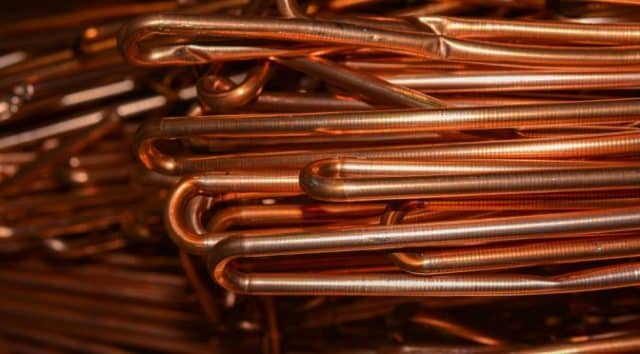Gold Silver Reports – Copper Producers Switch to Provisional Pricing; Aim to Avoid Losses — In a major shift in strategy, downstream copper producers (manufacturers of wires, cables, pipes and tubes, etc.) have started fixing their product prices on provisional basis, a practice similar to primary metal producers.
Earlier, they used to fix product prices on the basis of the cost paid to primary producers, with a one-month lag. This meant the variation in the copper procurement price in January could have been passed on to consumers in February. However, this way many downstream producers used to incur massive losses if the products were sold at a lower cost due to volatile prices on the benchmark London Metal Exchange (LME). To avoid this, they have started quoting prices on provisional basis.
Normally, primary copper producers quote their product (cathode, wire bars etc.) prices on provisional basis. The final prices are determined based on the copper price movement on the LME, taxes and exchange rate at the end of the month. Provisional prices are 10 per cent higher than the final price to accommodate notional volatility.
“We follow a policy of purchasing copper on the LME average of the month of consumption. This means, while we buy the copper physically at the beginning of the month, it will be at a provisional price. The LME pricing is used for the whole month on an average to determine the final price to be paid at the end of the month. This way we are always with the market in terms of pricing.
Similarly, for sales, we pass on the increase or decrease in the copper LME to the end customer by changing our list prices,” said Deepak Chhabria, executive chairman, Finolex Cables.
Meanwhile, minor variations on either side (buy of raw material or sell of finished products) are absorbed by downstream producers. But, these downstream producers pass on major variations in raw material prices to consumers. “While we absorb minor variations, any major variation is immediately passed on to the customer with a one week notice,” said Chhabria.
Read More: Gold Prices Edge up on Global Cues, Jewellers’ Buying
The change in the strategy comes due to a sharp volatility seen in copper prices over the past few years. Sometimes, prices move up on a temporary supply-side issue, but it recover immediately after smooth arrivals. Copper prices can go up by 10-15 per cent in the month of procurement, resulting in costlier raw materials. Since, downstream producers work on 5-7 per cent margins, such a sharp increase in raw materials needs to be passed on to consumers.
“Interest cost increases in proportion to investment, resulting in margin pressure on downstream players. Thus, we raise prices proportionately to cover the increase in raw materials to maintain profit margins. Interestingly, we have started raising prices on real time basis,” said Sandeep Jain, managing director, Laurel Wires.
Meanwhile, copper prices have jumped over six per cent from recent lows of $6,645 a tonne in December 5, to trade at $7,066 a tonne. The state-owned Hindustan Copper has raised their prices by 3 per cent month-on-month, with copper cathode (full) at Rs 482,711 a tonne for February. Last year, copper prices had jumped 10.5 per cent forcing downstream producers to change their business strategy. – Goldman Neal Bhai Reports


Comments are closed.